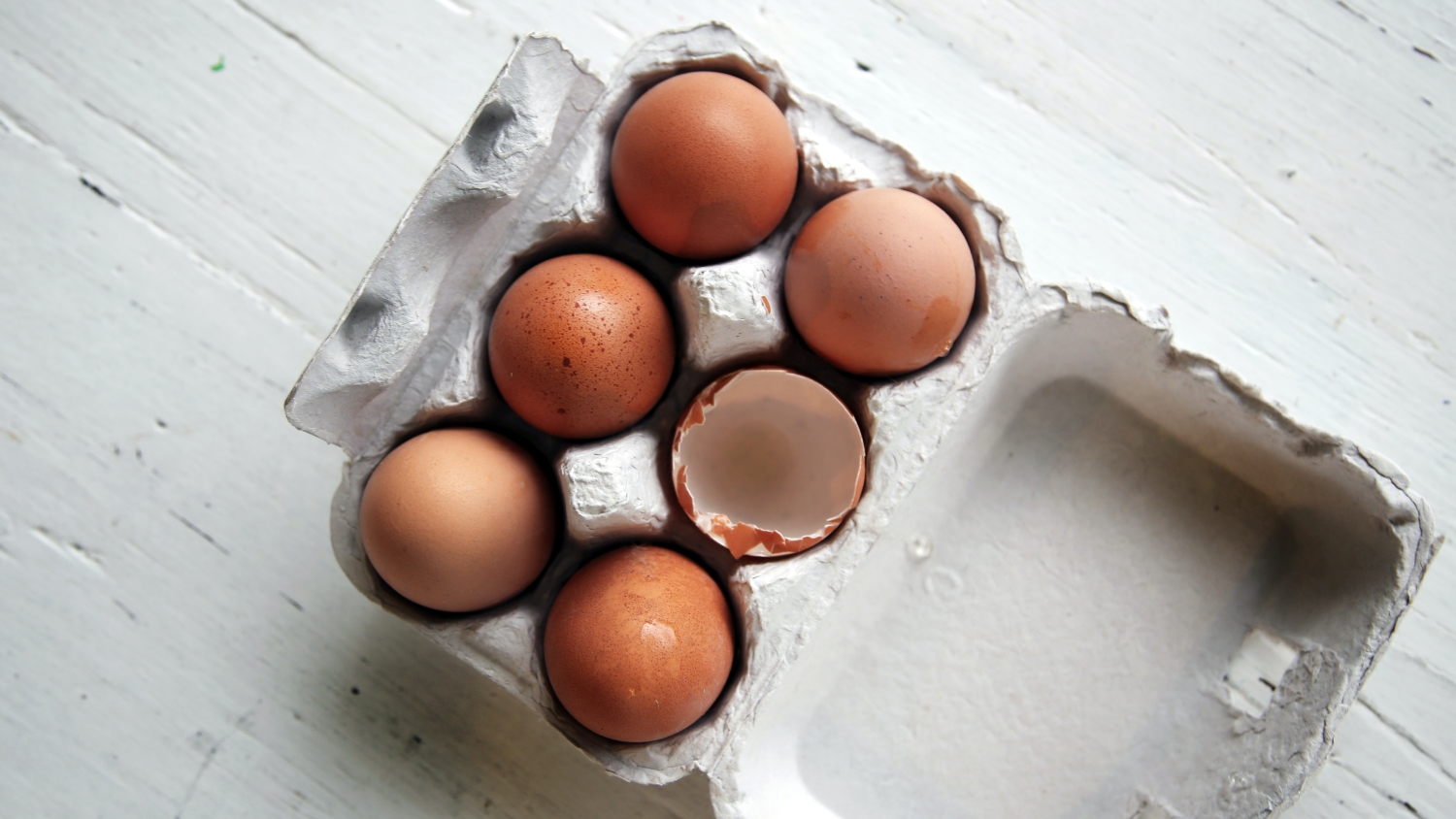At school, students are often intimidated by chemistry topics and labs. Introduce your children to chemistry concepts in your own kitchen, and when they get to class, they will know exactly what is going on… they’ve cooked it up already! Here are three rich opportunities to explore chemistry in your own kitchen:
Eggs
Boil them! Egg white is about 90% water and 10% proteins, mainly albumins. Like all proteins, egg white proteins are meticulously folded. Heating the proteins causes them to unfold and tangle with each other, making the egg white solidify. If cooked too long, the egg white becomes rubbery.
Whip them! Beating egg whites mixes them with tiny bubbles of air. The egg white proteins space themselves around the air bubbles, and when the bubbles pop, the proteins stay in place, forming the egg whites into stiff peaks.
Smell them! Heating eggs catalyzes reactions among albumin proteins that contain sulfur, producing hydrogen sulfide. H2S is responsible for the “boiled egg” smell. If you boil eggs too long, the H2S reacts with iron in the yolk, producing ferrous sulfide, which smells even stronger.
Vinegar
Test it! Vinegar, or acetic acid, is a weak acid. Make your own pH indicator by combining equal parts water and chopped red cabbage in a microwave-safe bowl and microwave for 4 minutes. Cool until it is safe to strain the liquid, which is the pH indicator. Compare the acidity of vinegar to other water-based liquids in your kitchen (salad dressing, juices, teas, milk, cleaning products, etc.) Combine equal parts of pH indicator with each liquid and compare the resulting colors. Basic liquids turn the indicator green, and acidic liquids turn the indicator violet.
React it! Put a few teaspoons of baking soda (sodium bicarbonate) into a cup, and put the cup on a tray or catch basin. Carefully pour vinegar into the cup and watch the reaction! Sodium bicarbonate is a base and acetic acid is an acid, so they react to form carbon dioxide and water.
Clean with it! Make a cleaning solution by mixing ¼ cup vinegar (acetic acid) and 1 teaspoon of salt (sodium chloride). The reaction between these two substances produces sodium acetate and hydrogen chloride. Gather up all the dirty pennies you can find, and dip them in the cleaning solution. The solution dissolves the copper oxide on the pennies and exposes the pure copper. Dry the pennies off thoroughly to prevent oxidation.
Milk
Make it colorful! Pour a shallow layer of whole milk into a pan. Dot the milk with different colors of food coloring. Dip a cotton swab into dish detergent and touch the swab to the milk. Watch the colors move and mix! The soap molecules in the dish detergent move through the mixture and surround fat molecules in the milk, and the food color molecules are pushed around in the process.
Make it sweet! In a quart-size zip lock bag, mix ¼ cup cream, ¼ cup milk, 1 tablespoon sugar, and 1 teaspoon vanilla extract. In a gallon-size zip lock bag, put 5 cups of ice and ½ cup salt, and then put the sealed quart-size bag into the bag of ice and salt. Seal the gallon-size bag and shake it for 10 minutes. The salt lowers the freezing point of the ice, so the ice cream will freeze. Shaking the mixture gives it a smooth texture and helps all of it to freeze evenly.
Make it plastic! Heat 1 cup of whole milk in the microwave for 1-2 minutes. Add 4 tablespoons of vinegar. Add more if needed, until the milk is mostly curdled. Strain out the liquid and keep the curds. Add a few drops of food coloring and knead the curds to mix the color in. This is your homemade plastic! Mold your milk plastic into a keychain or charm. Use a toothpick to make a hole in it if you like. Let your creation dry for 48 hours.



